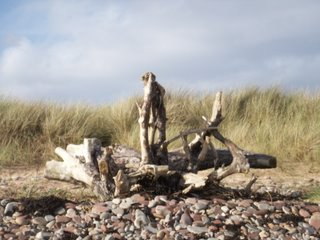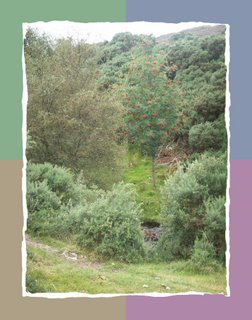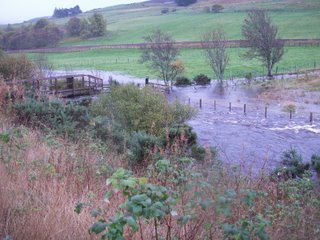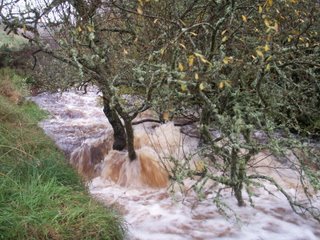 Ten year conflict 1833-1843
Ten year conflict 1833-1843
In the internal struggle within the Church of Scotland, lasting around the 10 years, which coincided with a changing society, the industrial expansion, increase in iron works and the country's gross income increasing rapidly it was inevitable that matters would come to a head as people began to question in this new enlightenment. When the disruption came, on the basis of the state being able to have control over the church or not then many other underlying matters were neatly placed behind the disruption issue itself. Three underlying drivers were present.
- Who has final authority, church government or state church
- Patronage
- Calls and filling of church vacancies (see Marnoch case 1838)
By 1834 the moderate had lost control of the general assembly.
By 8/3/1838 it was decreed that in the settlement of pastors the church must have no regard to the feelings of the congregation.
This Law was appealed by the House of Lords in March 1839 the decree was confirmed.
"The wishes of the Christian congregation were to be considered of no value in any way". This meant the civil court retained the power to introduce a candidate for a church to an unwilling congregation. Despite the changes over the centuries the law of patronage was back. For the Christian community of today this seems so out of date and out of line with the way churches should cooperate.

Free Churches of Scotland
So on 18/5/1843 A church disestablishes itself.
The Free Church fore fathers dissented for:
1.Non interference of civil courts in matters belonging to the spiritual of the church The claim, declaration and protest 1842 leaves it clear the fore fathers saw the rights of the Church of Scotland as established by Law.
2.No other head of the church but the lord Jesus Christ.
3.He had appointed Church officers to deal with church matters.
Their descendants were to find this ruling hard to follow when a compromise in a differing of opinion could be satisfied amicably regarding church assets in a further split in later years.
Ironically the church had to go to the courts in the turn of the 20 century. Its claim of right was in the formal document created by those founding fathers. The Church of Scotland response was a pastoral style letter with scriptural tone looking to reconcile the differences. The church it would seem in hindsight had a better grasp of how the Scottish worshipers felt.
Free Church of Scotland
Thomas Chalmers the leader of the group was particularly wanting it known that their split was not like the Scedeers before. The voluntaries mistake us was his cry. Candlish vented his ill feeling to the state church which did not help the cause. So the Free Church who called themselves evangelical took a large part of the Church away.
The remaining moderates (now a term of scorn) were left to continue as before.
The Free Church of Scotland, comes from an evangelical, orthodox, Presbyterian background with Church of Scotland principles. Chapel of Ease funded by ex Church members who now in the Free Church were being chased to pay debts or up keep of the chapels that they did not/ were not allowed to own.
One of the most outstanding evangelists in the Free Church of Scotland was Henry Drummond (1851-1898). Born in Stirling, the Drummond Trust and lectures continue to acknowledge this man who died at the age of 46. His training in science and divinity together with his passion to visit those in the deprived areas of Edinburgh showed his conviction that, where gods people get involved-gods kingdom will be made on earth. As well as working with and gaining respect from groups like the miners of Polmont, Drummond had many journeys abroad. He was recognised as a free thinker who could work with science and religion.
Hymns
Opposition to Hymns and instruments is not restricted to this arm of the Presbyterian Church. But James Begg was a promoter of the use of Psalms and no instruments.
In 1866 the Free Church voted 3 to 2 for the use of hymns. In 1869 Begg was unsuccessful in Curtailing hymns. In 1872 the Church accepted the “New Hymn book“ 213 votes to 61. In 1877 Prof Bruce wished to have their “Own Free Hymn Book” with Begg supporting a defence of no change position.
Then in 1892 the assembly with drew permission to use instruments for worship and uninspired Hymns in public worship- the current position.
Declaratory Act 1892
The Free Church produced the act to change its fundamental position in constitution from The Confession to a reformed creed, but because of the Barrier Act, had to get approval from its presbyteries for any constitutional change.
The basis of the act supported strongly by Rainy was
1.Free to allowed to modernise the creed of the church
2.Act was used to help professor deal with college “scruples” in theology in an age of questioning.
3.Discipline seemed to be a thing of the past
Rainy was successful in having the act passed.
This meant the possibility of moving away from the founding Westminster Confession to the substance of the reformed faith.
Failing to give justice to those who disagreed with this change and to their feelings and convictions stated by some and the lack of unity and peace 21 ministers and 21 elders of the Free church signed a dissenting document.
Their protest was based on :
- The overpowering of the majority on their minority
- The Office bearers were changing the “founding” constitutional which was Ultra Vires regarding The Westminster Confession and in the face of the protesting minority.
Thus in 1893 those who had now dissented, created the Free Presbyterian Church of Scotland.

When the majority of the Free Church joined the United Free Church in 1900 their were those who refused. They wished to carry on as the Free Church and decided to sue the United Free Church for some or all of the assets of the joining free church. The remaining Free Church who took the action (“Wee Frees”) suffered 4 years of legal wrangling with the United Free Church trying to evict the Free Church Ministers.
Turn up for the books
In 1904 the House of Lords came on side of the minority and said that the minority of the remaining Free Church of Scotland were entitled to all the assets. Nevertheless the Government of the day stepped in and said the division of the property should be made to both the Free Church and the United Free Church.
In terms of practice the Free Church of Scotland of today carries on very similarly to the days of the past.

 The Rain over the last few days has changed the countryside. Some are saying the local river has never been so high.
The Rain over the last few days has changed the countryside. Some are saying the local river has never been so high.




